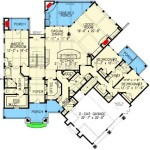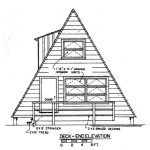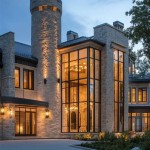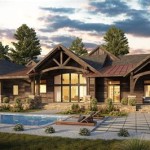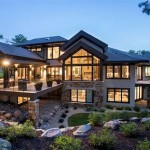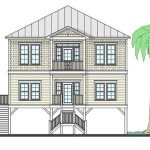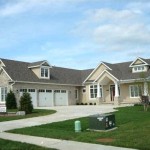Tudor cottage house plans are blueprints or designs that guide the construction of traditional English cottages resembling architectural styles popular during the Tudor period (1485-1603). These charming dwellings embody the essence of the English countryside and seamlessly blend medieval and Renaissance design elements.
Tudor cottage house plans are highly sought after by homeowners seeking rustic and cozy living spaces. A notable example is Anne Hathaway’s Cottage in Stratford-upon-Avon, England, which exhibits many classic Tudor cottage features such as exposed beams, thatched roofs, and lattice windows. The intricate details and timeless appeal of Tudor cottages have inspired architects and home enthusiasts to recreate this architectural style in modern-day homes.
In the following sections, we will delve deeper into the enchanting world of Tudor cottage house plans, exploring their history, key architectural characteristics, and contemporary adaptations.
Tudor cottage house plans epitomize the quintessential English countryside aesthetic. Here are ten key points to consider:
- Steeply pitched roofs
- Thatched or tiled roofing
- Exposed timber framing
- Casement windows with lattice panes
- Arched doorways and windows
- Decorative chimneys
- Asymmetrical facades
- Bay windows and oriels
- Charming gardens
- Rustic interiors
These elements combine to create a timeless and picturesque style that continues to enchant homeowners today.
Steeply pitched roofs
Steeply pitched roofs are a defining characteristic of Tudor cottage house plans. These roofs serve several important functions:
- Protection from the elements: The steep pitch of the roof allows water and snow to shed quickly, preventing damage to the structure and interior of the home.
- Ventilation: The steep pitch also promotes air circulation within the roof space, preventing moisture buildup and ensuring proper ventilation.
- Additional living space: In some cases, the steep pitch of the roof allows for the creation of habitable attic spaces, providing additional living or storage areas.
- Aesthetic appeal: The steeply pitched roofs, often adorned with decorative chimneys and dormer windows, add to the overall charm and visual appeal of Tudor cottages.
The steep pitch of the roof is not only functional but also contributes to the distinctive silhouette that has made Tudor cottages beloved architectural icons.
Thatched or tiled roofing
Tudor cottage house plans often feature thatched or tiled roofing, each with its own distinct characteristics and advantages:
- Thatched roofing:
Thatched roofing is a traditional roofing material made from natural materials such as straw, reeds, or heather. It has several benefits:
- Insulation: Thatched roofs provide excellent insulation, keeping homes cool in summer and warm in winter.
- Durability: When properly maintained, thatched roofs can last for decades.
- Aesthetic appeal: Thatched roofs add a touch of rustic charm and character to Tudor cottages.
- Tiled roofing:
Tiled roofing is another common choice for Tudor cottages. Tiles are made from clay or concrete and offer several advantages:
- Durability: Tiled roofs are extremely durable and can last for centuries.
- Fire resistance: Tiles are non-combustible, making them a good choice for fire-prone areas.
- Variety: Tiles come in a wide range of colors and styles, allowing for customization to suit different tastes.
Whether thatched or tiled, the roofing material plays a significant role in the overall aesthetic and functionality of Tudor cottage house plans.
Exposed timber framing
Exposed timber framing is a hallmark of Tudor cottage house plans. This structural system not only provides support to the building but also adds a unique aesthetic charm:
- Load-bearing structure: The exposed timber frame serves as the primary load-bearing structure of the cottage. It consists of massive oak beams that are joined together using traditional joinery techniques, such as mortise and tenon joints.
- Interior aesthetics: The exposed timber frame creates a warm and inviting interior atmosphere. The natural grain and texture of the wood add visual interest and character to the space.
- Exterior aesthetics: The exposed timber frame is often visible on the exterior walls of Tudor cottages, adding to their rustic and picturesque appeal.
The exposed timber framing is not only a structural necessity but also an integral part of the Tudor cottage’s aesthetic identity.
The timber framing of Tudor cottages is typically constructed using large oak beams, which are renowned for their strength and durability. These beams are carefully shaped and joined together using traditional woodworking techniques, such as mortise and tenon joints. The resulting framework is not only structurally sound but also visually appealing, adding to the charm and character of the cottage.
The exposed timber frame also serves a practical purpose. It allows for the creation of flexible and adaptable interior spaces. The beams can be used to support mezzanines or lofts, creating additional living or storage areas. The open and airy nature of the timber frame also promotes natural ventilation and daylighting, creating a comfortable and healthy indoor environment.
Furthermore, the exposed timber frame provides a glimpse into the history and craftsmanship of the cottage. It reveals the methods and materials used by Tudor builders and adds a sense of authenticity and heritage to the home.
In contemporary Tudor cottage house plans, exposed timber framing is often incorporated in a more selective and refined manner. While the traditional structural role of the timber frame is still maintained, it is often combined with modern building materials and techniques to create a blend of old and new.
For example, exposed timber beams may be integrated into drywall or plaster walls, creating a visually striking contrast. Timber frames may also be used to accentuate certain architectural features, such as fireplaces or bay windows, adding a touch of rustic charm to the space.
The use of exposed timber framing in modern Tudor cottage house plans allows homeowners to enjoy the aesthetic appeal and historical character of this traditional building technique while benefiting from the advantages of contemporary construction methods.
Exposed timber framing remains a defining characteristic of Tudor cottage house plans, both traditional and contemporary. It not only provides structural support but also adds a unique aesthetic charm to the home. The exposed beams, crafted from sturdy oak and joined using traditional techniques, create a warm and inviting interior atmosphere. They are not only visually appealing but also serve a practical purpose, allowing for flexible and adaptable interior spaces. In modern Tudor cottage house plans, exposed timber framing is often incorporated in a more refined and selective manner, blending the charm of the past with the conveniences of the present.
Casement windows with lattice panes
Casement windows with lattice panes are another defining feature of Tudor cottage house plans. These windows not only provide natural light and ventilation but also contribute to the overall aesthetic appeal of the cottage:
- Operability: Casement windows are hinged on one side, allowing them to be opened outward like a door. This provides excellent ventilation and allows for easy cleaning.
- Lattice panes: The lattice panes, formed by intersecting strips of wood or metal, add a touch of elegance and charm to the windows. They also help to diffuse sunlight, creating a soft and inviting interior atmosphere.
- Historical authenticity: Casement windows with lattice panes were commonly used in Tudor-era cottages and are essential for maintaining the historical authenticity of the design.
- Energy efficiency: Modern casement windows with lattice panes can be fitted with energy-efficient glazing, making them a practical choice for contemporary homes.
The combination of functionality and aesthetics makes casement windows with lattice panes an integral part of Tudor cottage house plans.
Arched doorways and windows
Arched doorways and windows are prominent features in Tudor cottage house plans, adding a touch of elegance and architectural interest to the home:
- Historical authenticity: Arched doorways and windows were commonly used in Tudor-era architecture, and their incorporation into modern house plans helps to maintain the historical authenticity of the design.
- Aesthetic appeal: The graceful curves of arched doorways and windows create a visually pleasing and inviting appearance. They add a touch of sophistication and charm to the cottage’s exterior and interior.
- Increased natural light: Arched windows, particularly those with pointed or ogee arches, allow for larger glass panes, maximizing the amount of natural light entering the home. This creates a brighter and more spacious feel.
- Structural strength: Arches are inherently strong structural elements, capable of supporting heavy loads. This makes them a practical choice for doorways and windows, especially in areas with high wind or seismic activity.
Tudor cottage house plans often incorporate arched doorways and windows in a variety of ways:
- Entryways: Arched doorways are commonly used for the main entrance of the cottage, creating a grand and welcoming entry.
- Windows: Arched windows can be found throughout the cottage, from small casement windows to large bay windows. They add a touch of elegance to any room.
- Interior doorways: Arched doorways can also be used to connect different rooms within the cottage, creating a sense of flow and continuity.
- Decorative accents: Arches can also be incorporated as decorative accents, such as over fireplaces or alcoves, adding a touch of architectural interest to the space.
When designing Tudor cottage house plans with arched doorways and windows, it is important to consider the following factors:
- Proportions: The size and proportions of the arches should be carefully considered to ensure they are in harmony with the overall design of the cottage.
- Materials: Arches can be constructed from a variety of materials, including brick, stone, or wood. The choice of material should complement the overall aesthetic of the cottage.
- Glazing: The type of glazing used in arched windows can have a significant impact on the overall look and feel of the space. Leaded or stained glass windows can add a touch of historical charm, while modern glazing options offer improved energy efficiency.
- Hardware: The hardware used for arched doorways and windows, such as hinges and handles, should be chosen to complement the overall style of the cottage.
Arched doorways and windows are a defining characteristic of Tudor cottage house plans, adding a touch of elegance and architectural interest to the home. By incorporating these features into the design, homeowners can create a charming and authentic Tudor-style cottage that embodies the spirit of the era.
Decorative chimneys
Decorative chimneys are a prominent feature of Tudor cottage house plans, adding a touch of charm and architectural interest to the home:
Tudor chimneys are typically tall and slender, with a square or octagonal base. They are often adorned with decorative details such as corbeling, stringcourses, and finials. The chimneys may also feature intricate brickwork patterns, such as herringbone or basketweave.
In addition to their aesthetic appeal, decorative chimneys also serve a practical purpose. They help to draw smoke and fumes away from the living spaces of the cottage. The tall height of the chimneys ensures that the smoke is dispersed high into the atmosphere, preventing it from entering the home.
The design of Tudor chimneys often reflects the regional influences of the area where the cottage is built. For example, chimneys in the Cotswolds region of England are typically made of local limestone, while chimneys in East Anglia are often constructed from red brick.
Tudor chimneys are not only visually appealing but also highly functional. They are carefully designed to ensure proper ventilation and smoke evacuation, contributing to the comfort and safety of the home.
The height and shape of Tudor chimneys are carefully calculated to optimize their performance. The tall, slender design creates a strong draft, which helps to draw smoke and fumes up and out of the chimney. The square or octagonal base provides stability and strength, ensuring that the chimney can withstand strong winds and other environmental forces.
The decorative details on Tudor chimneys are not merely aesthetic embellishments but also serve a functional purpose. Corbeling, stringcourses, and finials help to strengthen the chimney and prevent it from cracking or collapsing. Intricate brickwork patterns can also improve the chimney’s resistance to water penetration and weathering.
When designing Tudor cottage house plans with decorative chimneys, it is important to consider the following factors:
- Height and shape: The height and shape of the chimney should be carefully considered to ensure proper ventilation and smoke evacuation. The chimney should be tall enough to create a strong draft, but not so tall that it becomes unstable.
- Materials: The choice of materials for the chimney should complement the overall aesthetic of the cottage. Common materials used for Tudor chimneys include brick, stone, and limestone.
- Decorative details: The decorative details on the chimney should be in keeping with the overall style of the cottage. Common decorative elements include corbeling, stringcourses, finials, and intricate brickwork patterns.
- Safety: The chimney should be properly constructed and maintained to ensure the safety of the occupants. Regular chimney inspections and cleaning are essential to prevent chimney fires and other hazards.
Decorative chimneys are an integral part of Tudor cottage house plans, adding a touch of charm, architectural interest, and functionality to the home. By incorporating these features into the design, homeowners can create a charming and authentic Tudor-style cottage that embodies the spirit of the era.
Asymmetrical facades
Asymmetrical facades are a defining characteristic of Tudor cottage house plans, contributing to their unique and picturesque appearance:
Tudor cottages are known for their irregular and asymmetrical facades, which create a sense of visual interest and movement. This asymmetry is achieved through the varied placement of windows, doors, and other architectural elements on the exterior of the cottage.
One of the most common forms of asymmetry in Tudor facades is the use of projecting bays and gables. Bays are extensions of the main structure of the cottage that protrude outward, creating additional space and visual interest. Gables are triangular sections of wall that are formed by the intersection of two sloping roof lines. The placement of bays and gables on different sides of the cottage creates an asymmetrical and visually dynamic facade.
Another element that contributes to the asymmetry of Tudor facades is the varied use of windows and doors. Tudor cottages often feature a mix of window sizes and shapes, including casement windows, bay windows, and oriel windows. The placement of these windows on the facade is often asymmetrical, with some windows grouped together and others placed singly.
Doors are also an important element in creating asymmetry on Tudor facades. The main entrance to the cottage is typically located off-center, with smaller doors or postern gates placed on other sides of the building. This asymmetrical placement of doors adds to the overall visual interest and charm of the cottage.
The asymmetry of Tudor facades is not only aesthetically pleasing but also practical. The varied placement of windows and doors allows for better natural light and ventilation within the cottage. The projecting bays and gables provide additional living space and can be used for a variety of purposes, such as creating cozy nooks or adding extra bedrooms.
Overall, the asymmetrical facades of Tudor cottage house plans are a key element in their architectural charm and functionality. By incorporating these features into the design, homeowners can create a unique and inviting cottage that embodies the spirit of the Tudor era.
Bay windows and oriels
Bay windows and oriels are two types of projecting windows that are commonly featured in Tudor cottage house plans. These windows not only add to the aesthetic appeal of the cottage but also provide additional space and natural light.
Bay windows are multi-sided windows that project outward from the wall of the cottage. They are typically composed of three or more casement windows that are joined together at an angle. Bay windows create a spacious and light-filled area within the cottage, and they often offer panoramic views of the surrounding landscape.
Oriel windows are similar to bay windows, but they are smaller and have a more pronounced projection. Oriel windows are typically supported by corbels or brackets, and they often feature intricate decorative details such as tracery or stained glass. Oriel windows add a touch of elegance and charm to Tudor cottages, and they can be used to create cozy reading nooks or intimate seating areas.
Both bay windows and oriels can be fitted with a variety of window treatments, such as curtains, blinds, or shutters. The choice of window treatment will depend on the desired level of privacy and light control. Bay windows and oriels can also be fitted with window seats, which provide a comfortable spot to relax and enjoy the views.
When designing Tudor cottage house plans with bay windows and oriels, it is important to consider the following factors:
- Size and placement: The size and placement of bay windows and oriels should be carefully considered to ensure that they are in proportion to the overall cottage and that they do not obstruct the flow of traffic within the home.
- Style: The style of the bay windows and oriels should complement the overall architectural style of the cottage. Traditional Tudor bay windows and oriels typically feature mullioned windows and decorative details such as tracery or stained glass.
- Functionality: Bay windows and oriels can be used for a variety of purposes, such as creating cozy seating areas, reading nooks, or home offices. It is important to consider the intended use of the space when designing the bay window or oriel.
- Energy efficiency: Bay windows and oriels can be less energy efficient than traditional windows due to their increased surface area. It is important to choose energy-efficient windows and to consider the use of window treatments to help reduce heat loss.
Charming gardens
Tudor cottage house plans often incorporate charming gardens that complement the architectural style of the home and provide a delightful outdoor space for relaxation and recreation. These gardens are typically characterized by a mix of formal and informal elements, creating a sense of both order and whimsy.
- Formal gardens: Formal gardens are characterized by their symmetrical layout and geometric shapes. They often feature neatly trimmed hedges, topiary, and flower beds arranged in intricate patterns. Formal gardens can be used for entertaining guests or simply for enjoying the beauty of nature.
- Informal gardens: Informal gardens are characterized by their more relaxed and natural appearance. They often feature winding paths, lush flower beds, and a variety of trees and shrubs. Informal gardens are perfect for creating a cozy and inviting outdoor space where one can relax and escape the hustle and bustle of .
- Kitchen gardens: Kitchen gardens are a practical addition to any Tudor cottage house plan. They can be used to grow a variety of fruits, vegetables, and herbs for use in the kitchen. Kitchen gardens are a great way to reduce one’s environmental impact and enjoy the satisfaction of growing one’s own food.
- Courtyards: Courtyards are enclosed outdoor spaces that are often found in the center of Tudor cottages. Courtyards provide a private and sheltered space where one can relax, dine, or simply enjoy the outdoors. Courtyards can be paved with stone or brick, and they may also feature a fountain or other water feature.
When designing a charming garden for a Tudor cottage house plan, it is important to consider the following factors:
- Style: The garden should complement the architectural style of the cottage. Formal gardens are best suited for cottages with a more traditional appearance, while informal gardens are better suited for cottages with a more relaxed and rustic appearance.
- Functionality: The garden should be designed to meet the needs of the homeowners. If the homeowners enjoy entertaining guests, a formal garden with plenty of seating areas may be a good choice. If the homeowners prefer to relax and enjoy nature, an informal garden with winding paths and lush flower beds may be a better option.
- Climate: The garden should be designed to thrive in the local climate. It is important to choose plants that are well-suited to the amount of sunlight, rainfall, and temperature in the area.
- Maintenance: The garden should be easy to maintain. Homeowners should choose plants that are relatively low-maintenance and that do not require a lot of watering or fertilizing.
Rustic interiors
Tudor cottage house plans often feature rustic interiors that are warm, inviting, and full of character. These interiors are typically characterized by the use of natural materials, such as wood, stone, and brick, and by a simple and uncluttered design.
One of the most important elements of a rustic interior is the use of natural wood. Wood can be used for flooring, walls, ceilings, and furniture. The type of wood used will vary depending on the region and the availability of materials. In England, oak was a popular choice for Tudor cottages, while in other parts of Europe, pine and fir were more commonly used.
Stone and brick are also commonly used in Tudor cottage interiors. Stone can be used for fireplaces, hearths, and flooring, while brick can be used for walls and chimneys. These materials add a sense of solidity and permanence to the cottage.
The design of Tudor cottage interiors is typically simple and uncluttered. The furniture is often made of simple, sturdy materials, such as wood and iron. The walls are often whitewashed or painted in a light color, and the floors are often covered with rush matting or stone tiles.
Overall, the rustic interiors of Tudor cottage house plans are warm, inviting, and full of character. These interiors are a reflection of the simple and of the Tudor era.










Related Posts

